Goal
I am trying to replicate this effect algorithmically:
This is for a project I am working on where I need to make stylised visualisations of different kinds of pizza. The image shows a Margherita (tomato base, mozzarella and basil on top).
The rules I need to adhere to:
- each ‘layer’ consists of uniformly positioned objects with a stroke and filled with a pattern (that shares coordinates)
- the layers need to cover lower layers
Means
To achieve the uniform distribution, I use Poisson-Disc sampling.
I chose SVG because I need the result to be visible in the browser and generate this server-side.
For efficiency and simplicity – as the viewing size will be smaller – I decided to reference one object with <use> elements and vary it only with rotations, as opposed to the sample.
Attempts
Every approach I tried reached a dead end:
Creating a
<clipPath>filled with<use>elements for clipping the background.This does not allow me to add a stroke around the clipped area, which I need. A workaround would be to use a feMorphology filter, but that seems like it’s going to be needlessly costly on the client. A second workaround seemed to be:
Grouping the elements and using that group twice: once in a
<clipPath>for clipping the pattern background, once directly on the canvas with an added stroke.This does not work as
<g>elements are unsupported in web browsers due to completely arbitrary reasons (it does work in Inkscape, however, which I used for the proof-of-concept). A workaround would be to use two copies of all the<use>elements, but that would essentially double the file size.Grouping the elements and applying a fill with SVG patterns.
This does not work as since we create the distribution using
<use>elements, the pattern looks identical in every instance. Moreover, I cannot rotate the objects, as the pattern would get rotated too. A workaround would be not to use<use>, but that would create the same problem as in point 2.
